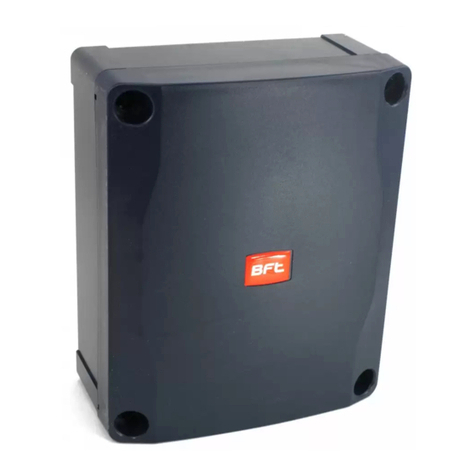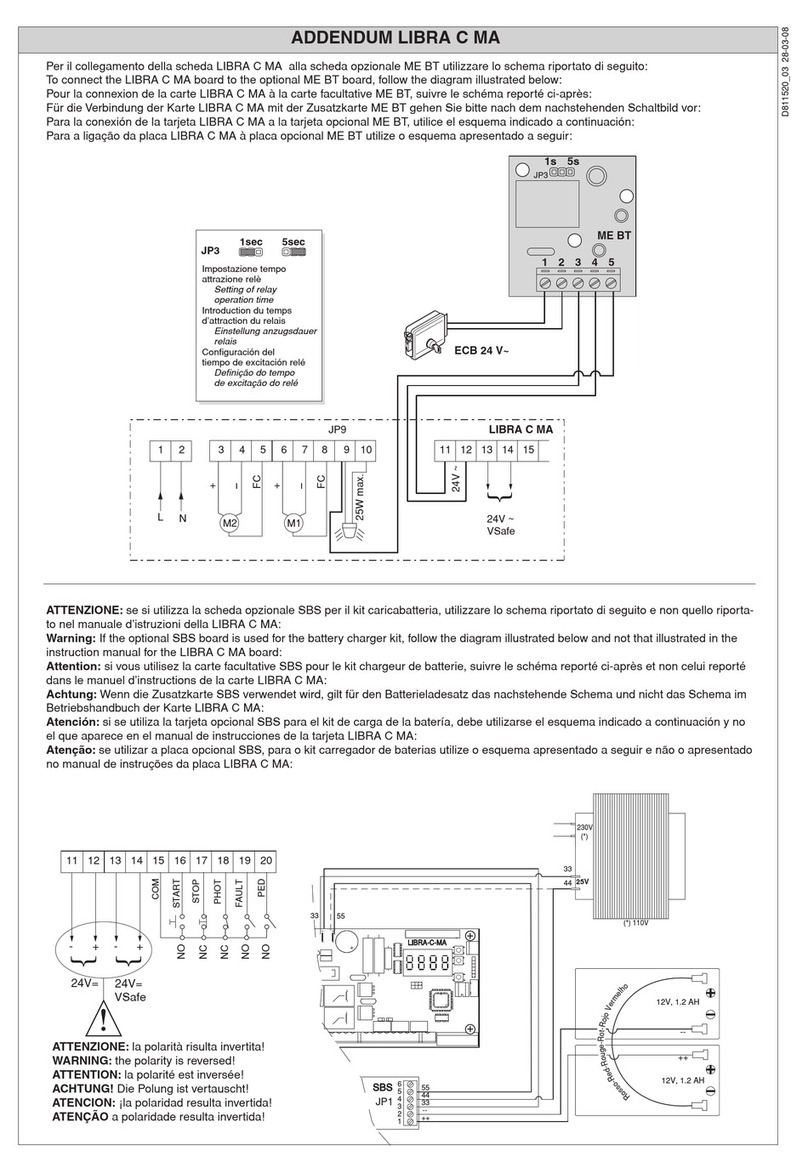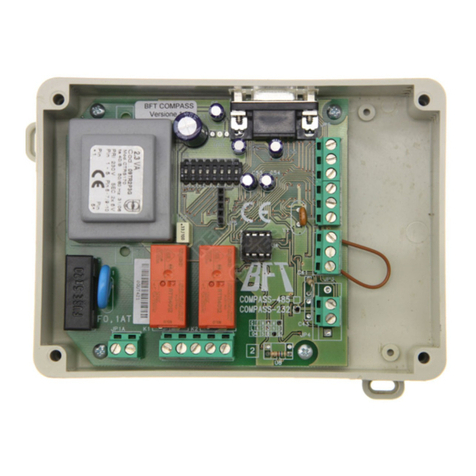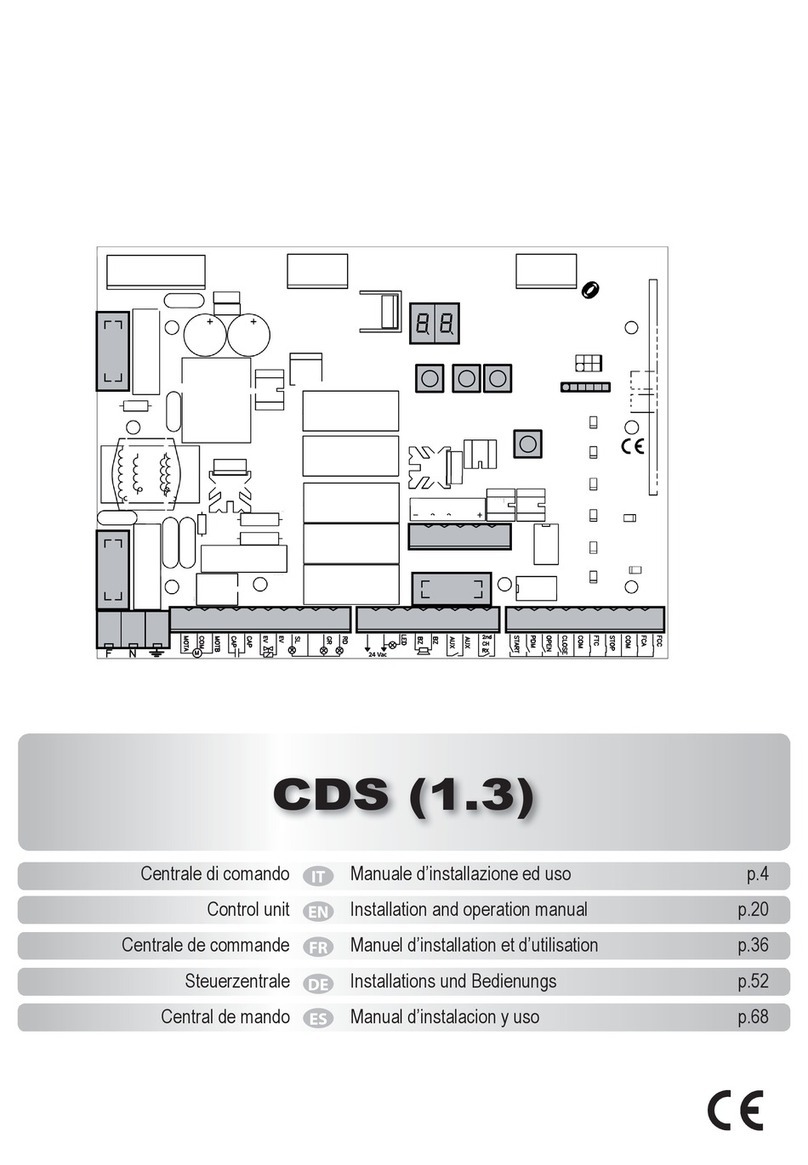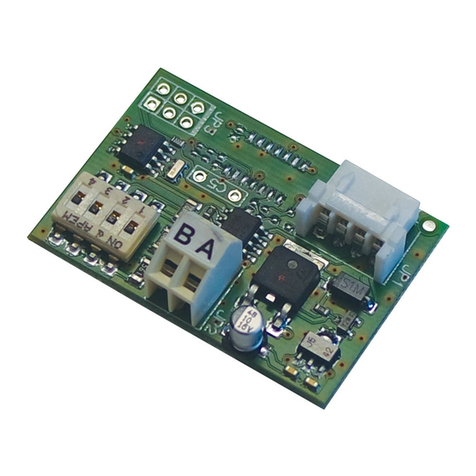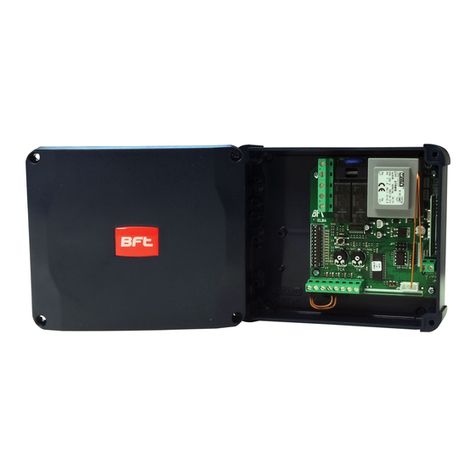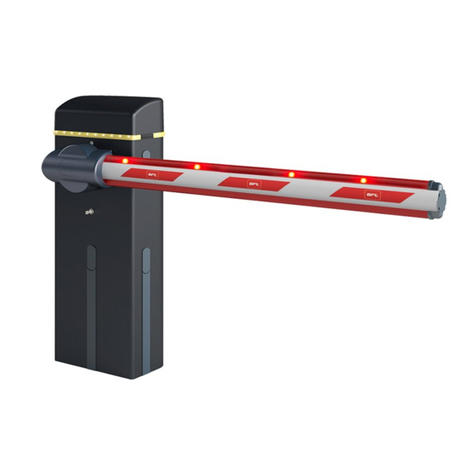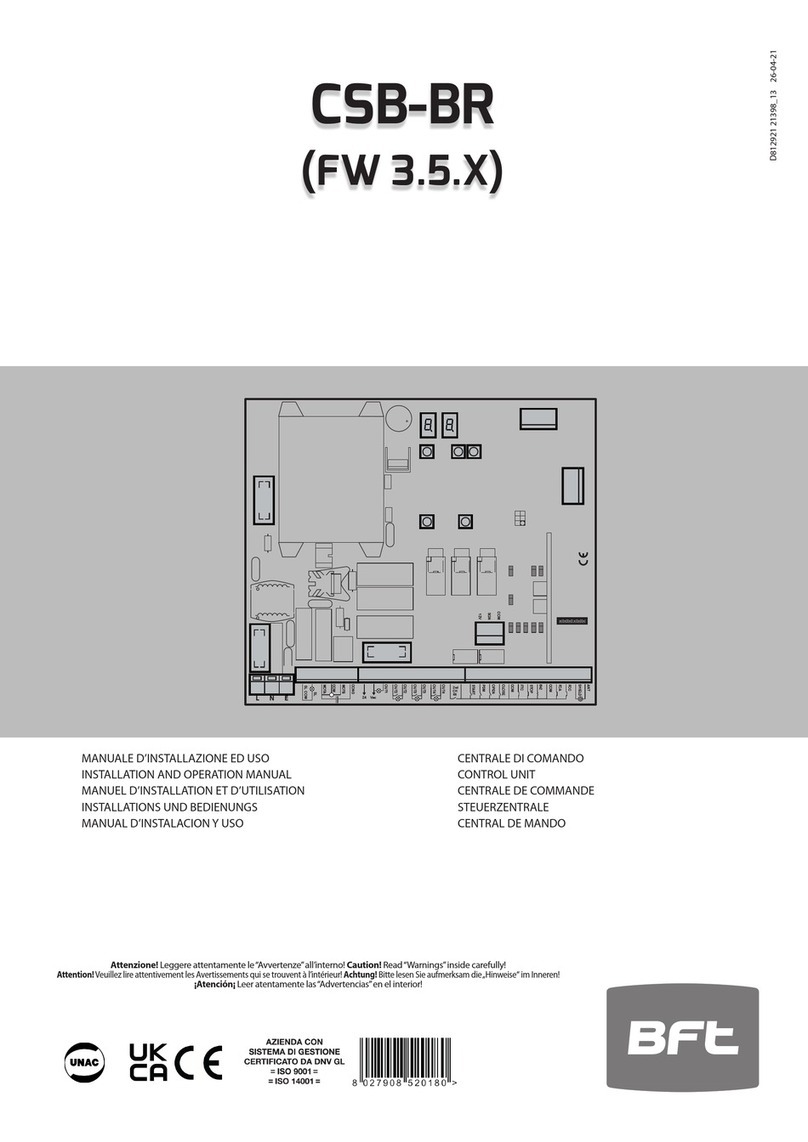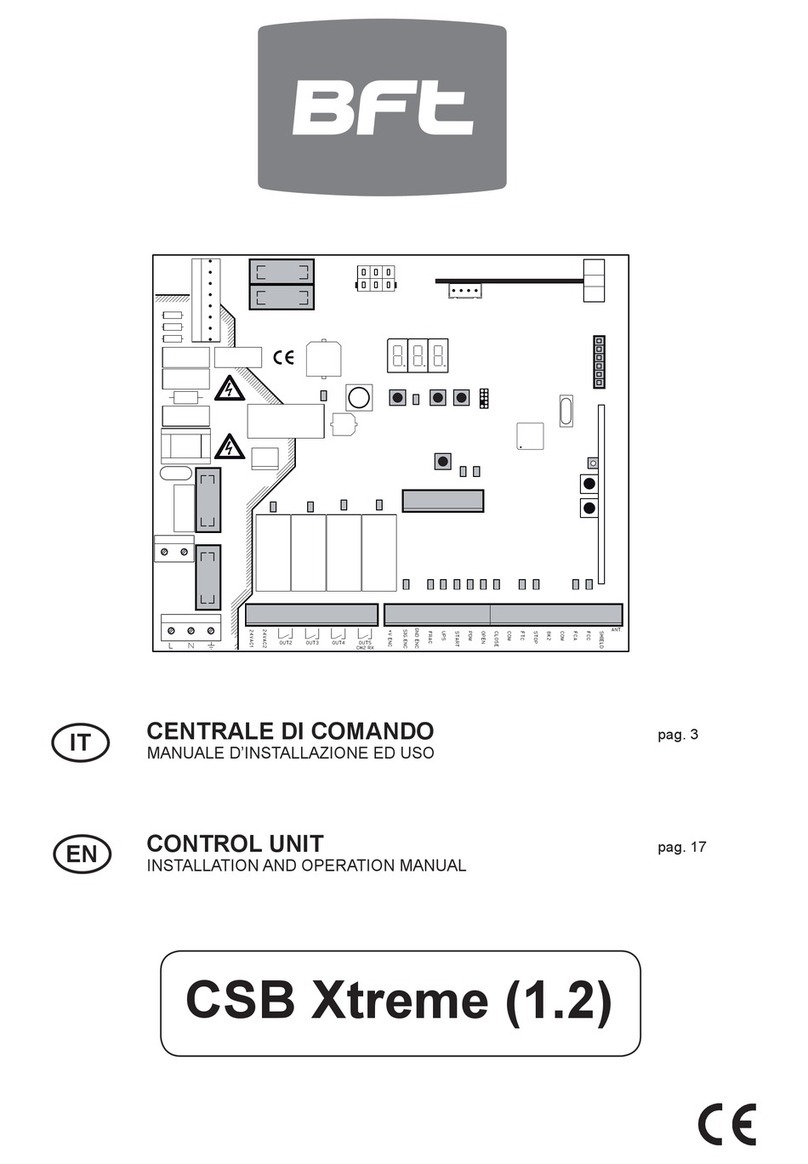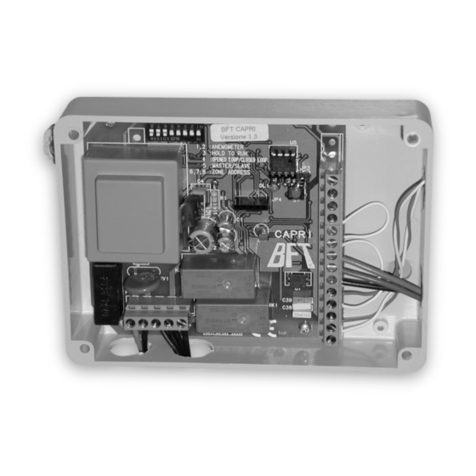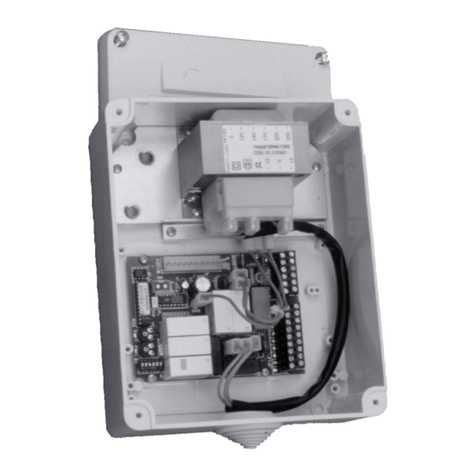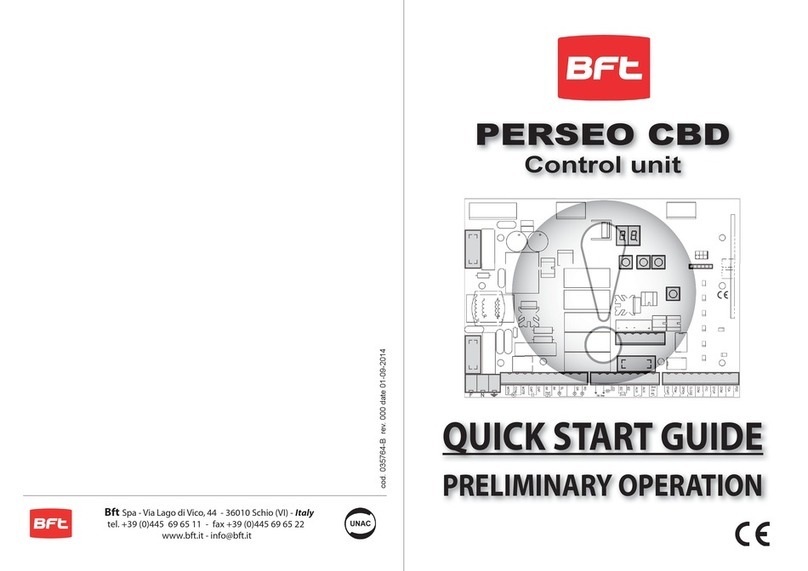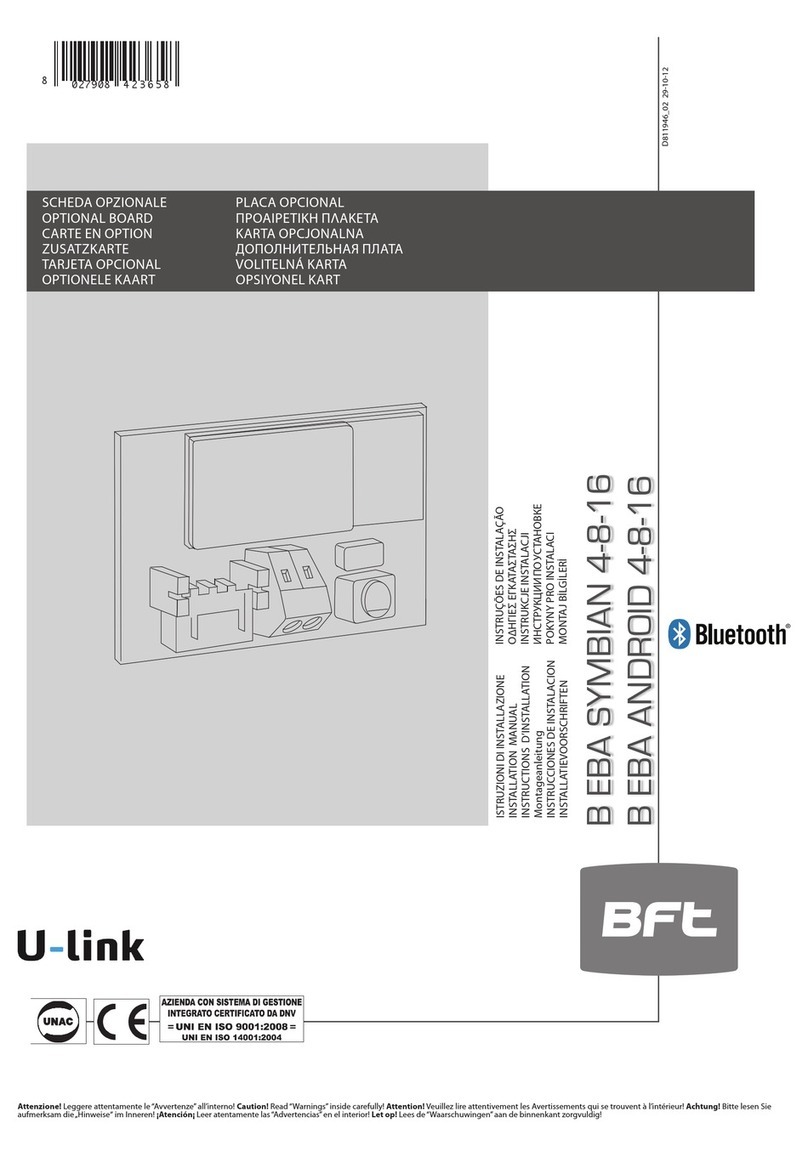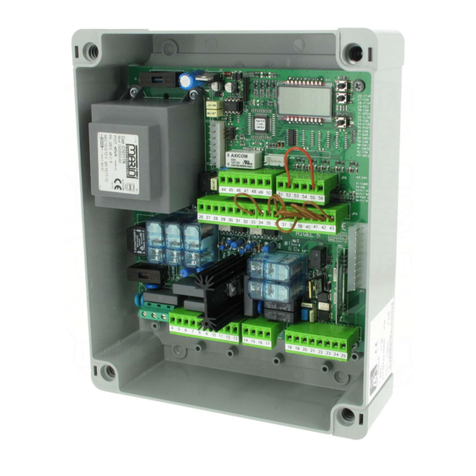
ENGLISH
WARNING! Important safety instructions. Carefully read and comply with
the Warnings booklet and Instruction booklet that come with the product as
incorrect installation can cause injury to people and animals and damage to
property. They contain important information regarding safety, installation,
use and maintenance. Keep hold of instructions so that you can attach them
to the technical le and keep them handy for future reference.
1) GENERAL SAFETY
WARNING! An incorrect installation or improper use of the product can
cause damage to persons, animals or things.
- The units making up the machine and its installation must meet the
requirementsofthefollowingEuropeanDirectives:2004/108/EEC,2006/95/
EECandlateramendments.Forallcountries outsidetheEEC,itis advisable
tocomplywiththeabove-mentionedstandards,inadditiontoanynational
standards in force, to achieve a good level of safety.
- The Firm disclaims all responsibility resulting from improper use or any
use other than that for which the product has been designed, as indica-
ted herein, as well as for failure to apply Good Practice in the construc-
tion of entry systems (doors, gates, etc.) and for deformation that could
occur during use.
- Make sure the stated temperature range is compatible with the site in
which the automated system is due to be installed.
- Do not install the product in an explosive atmosphere.
- Disconnect the electricity supply before performing any work on the sy-
stem. Also disconnect buer batteries, if any are connected.
- Have the automated system’s mains power supply tted with a switch or
omnipolar thermal-magnetic circuit breaker with a contact separation of
at least 3.5 mm.
- Make sure that upline from the mains power supply there is a residual
current circuit breaker that trips at 0.03A.
- Make sure the earth system has been installed correctly: earth all the me-
tal parts belonging to the entry system (doors, gates, etc.) and all parts of
the system featuring an earth terminal.
- Installation must be carried out using safety devices and controls that
meet standard EN 12978.
- Apply all safety devices (photocells, safety edges, etc.) required to keep
the area free of crushing, dragging and shearing hazards.
- Only use original spare parts for any maintenance or repair work. The
Firm disclaims all responsibility for the correct operation and safety of
the automated system if parts from other manufacturers are used.
- Do not make any modications to the automated system’s components
unless explicitly authorized by the Firm.
- Dispose of packaging materials (plastic, cardboard, polystyrene, etc.) in
accordance with the provisions of the laws in force. Keep nylon bags and
polystyrene out of reach of children.
- Anything which is not expressly provided for in the present instructions,
is not allowed.
- The device is not meant to be used by people (including children) whose
physical, sensory or mental capacities are impaired or who do not have
suitable experience or knowledge, unless a person responsible for their
safety provides them with supervision or operating instructions.
Warning! For connection to the mains power supply, use a multicore
cable with a cross-section of at least 4x1.5mm2of the kind provided for
bytheregulationsmentioned above(byway of example,typeH05VV-F
cablecanbeusedwithacross-sectionof4x1.5mm2).Toconnectauxiliary
equipment, use wires with a cross-section of at least 0,75 mm2.
Have an omnipolar circuit breaker installed with a contact separation
of at least 3 mm and featuring overload protection, suitable for cutting
the automated device o from the mains.
Only use pushbuttons with a capacity of 10A-250V or more.
The cables must be held in position using an extra xing device in the
proximity of the terminals, e.g. with cable clamps.
Alsoaddmoreclips to the limitdevicewires, tothetransformerprimary
or secondary wires, and to the wires connected to the printed circuit.
During installation, the power supply cable must be stripped in order
for the earthing wire to be connected to the appropriate terminal, but
the active wires must be left as short as possible. The earthing wire
must be the last to stretch in the case where the cable xing device
becomes loose.
WARNING: extremely low safety voltage cables must be phisically
separatedfromlowvoltagecables.Accesstotheelectricalcompart-
ment or to limit switches must be allowed to skilled personnel only.
Settingsensitivityincorrectlycanresultindamagetopropertyand
injury to people and animals.
Compliance with current safety rules with regard to people, animals and
property must be assured at all times and, more specically, measures must
be taken to avoid risks of injury due to crushing, in the area where the pinion
and rack mesh, and any other mechanical hazards. All critical points must
be protected by safety devices in accordance with the provisions of the
regulations in force.
CHECKING THE AUTOMATED DEVICE
Before the automated device is nally put into operation, perform the fol-
lowing checks meticulously:
• Make sure all components are fastened securely.
• Check the correct functioning of all safety devices (limit microswitches,
photocells, sensitive edges etc.).
• Make sure that the anti-crush system stops the door within the limits
provided for by the standards in force.
• Check the emergency operation control device.
•
Check the opening and closing operations with the control devices in use.
• Check the standard and customised electronic functioning logic.
MAINTENANCE
- Dismantle the gearmotor and replace the lubricating grease every two
years.
- When any operational malfunction is found, and not resolved, discon-
nect the mains power supply and request the assistance of a specialised
technician (installer).
SCRAPPING
Materials must be disposed of in conformity with the current regulations.
In case of scrapping, the automation devices do not entail any particular
risks or danger. In case of recovered materials, these should be sorted out
by type (electrical components, copper, aluminium, plastic etc.).
DISMANTLING
Whentheautomation system isdisassembledtobe reassembled onanother
site, proceed as follows:
- Disconnect the power supply and the entire electrical installation.
- Remove the actuator from its xing base.
- Disassemble all the installation components.
- In the case where some of the components cannot be removed or are
damaged, they must be replaced.
GENERAL WARNINGS
Correctcontrolleroperationisonlyensuredwhenthedatacontainedin
thepresent manualareobserved.TheCompanyisnotto beheldrespon-
sible for any damage resulting from failure to observe the installation
standards and the instructions contained in the present manual.
The descriptions and illustrations contained in the present manual are
not binding. The Company reserves the right to make any alterations
deemed appropriate for the technical, manufacturing and commercial
improvement of the product, while leaving the essential product fea-
tures unchanged, at any time and without undertaking to update the
present publication.
RIGEL 5 - 19
D811472 00100_01
